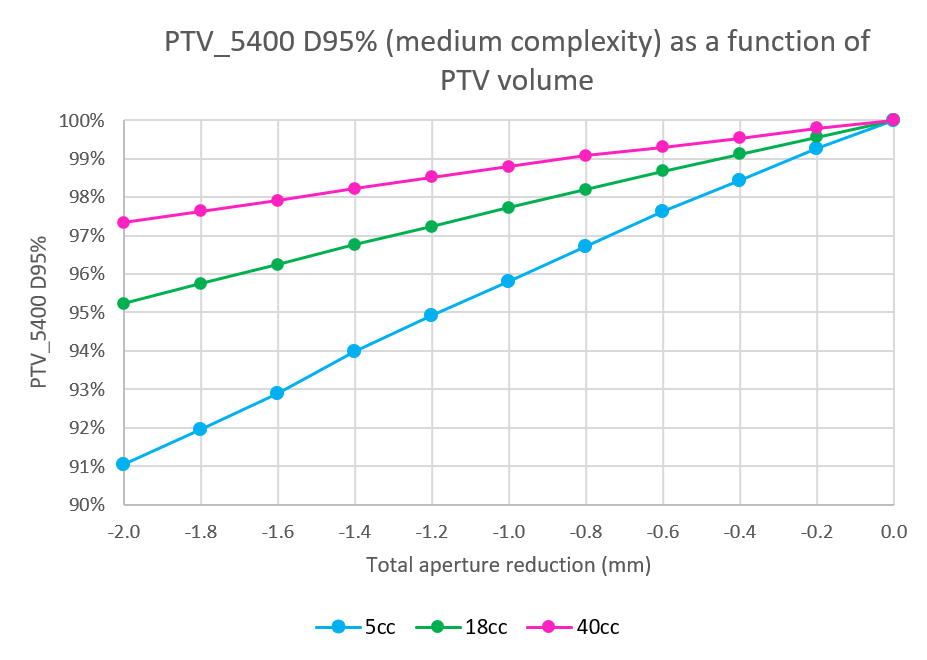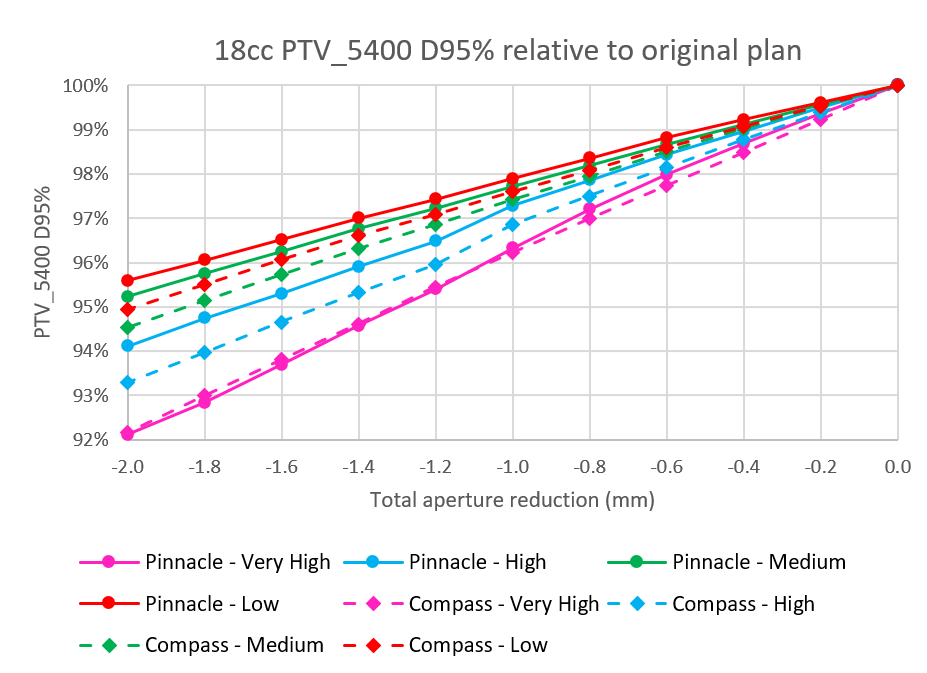Importance of Optimisation Parameters for Lung SABR Plan Robustness against Machine Delivery Errors
Andrew Thorne,
United Kingdom
PO-2021
Abstract
Importance of Optimisation Parameters for Lung SABR Plan Robustness against Machine Delivery Errors
Authors: Andrew Thorne1, Antony L. Palmer1, Geoff J. Budgell2
1Portsmouth Hospitals University NHS Trust, Radiotherapy Physics, Portsmouth, United Kingdom; 2The Christie NHS Foundation Trust, Radiotherapy Physics, Manchester, United Kingdom
Show Affiliations
Hide Affiliations
Purpose or Objective
Lung SABR planning aims for steep dose gradients at the PTV edge to achieve peak doses within the GTV and low dose in normal tissue. High gradients mean that small errors in MLC position below QA tolerance levels may lead to clinically significant deviations in plan dosimetry [1, 2]. MLC position errors may occur on both MLC banks, doubling the nominal error, resulting in isotropic reduction in dose not adequately accounted for in the PTV margin. The effect of optimisation parameter selection on plan robustness against machine delivery error has not hitherto been investigated.
Material and Methods
Using a CIRS IMRT thorax phantom, 3 spherical targets of volume 5, 18 and 40cm³ were planned in Pinnacle³ v16.4.3 to 54Gy in 3# in accordance with UK SABR Consortium guidelines [3]. Planning method was based on a local VMAT class solution using the medium setting to produce simple, open segments. Optimisation was varied using low, medium, high and very high complexity settings to produce four base plans per PTV. Plans were copied and adjusted by closing both MLC banks up to 1mm in 0.1mm increments, then doses recalculated at a 1mm resolution for a total of 132 plans. The planning study was validated experimentally for the 18cm³ target, measuring all plans on a Truebeam using a MatriXX chamber array (iBA), reconstructed using Compass (iBA). Compass uses an independent beam model and TPS-class collapsed cone algorithm to reconstruct delivered dose distribution based on MatriXX measurements.
Results
MLC aperture reduction had a linear effect on target DVH statistics; however, the rate of degradation per mm closure depended on the target and optimisation setting used. In the worst case, the 5cm³ target planned using the v. high setting resulted in 10% reduction in PTV D95% per mm closure per MLC bank. Higher complexity settings led to greater degradation under error. They also resulted in smaller mean field and lower modified gradient index (MGI) [3]; a key indicator of SABR plan quality.
Compass results for degraded plans relative to the original plans showed good agreement within 1% of TPS predictions.


Conclusion
Optimisation parameters affect the robustness of SABR plans to machine delivery errors. Planners should carefully consider plan optimisation settings for SABR, especially when targets are small (<20cm3). Machine delivery errors below action tolerances may occur resulting in suboptimal plan dosimetry, and planners should consider this alongside the goal to reduce MGI.
[1] Nithiyanatham, K. et al. (2015) “Analysis of direct clinical consequences of MLC positional errors in volumetric-modulated arc therapy using 3D dosimetry system”, Journal of Applied Clinical Medical Physics, Vol. 16, No.5, p.296-305
[2] Norvill, C. and Jenetsky, G. (2016) “Clinical significance of multi-leaf collimator calibration errors”, Australasian Physical and Engineering Sciences in Medicine, Vol 39, p. 253-258
[3] UK SABR Consortium (2019) “Stereotactic Ablative Body Radiation Therapy (SABR): A Resource”, Version 6.1